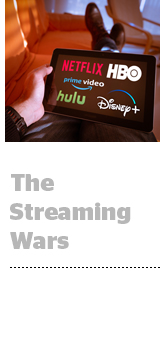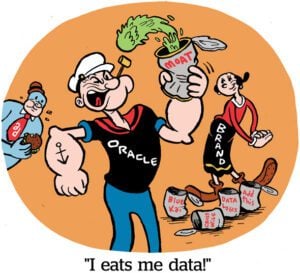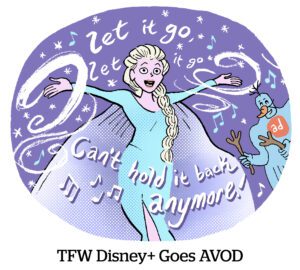With Disney+, Apple TV+, HBO Max and Peacock all hitting the market between this November and April 2020, streaming services will spend big on marketing to attract subscribers and compete for share.
In this new landscape, networks will have to reevaluate whether to accept tune-in ads from competitive streaming services. TV networks mentioned in this story either did not reply to or declined requests to comment.
Networks have always had some restrictions around competitive tune-in advertising – for instance, banning competitive tune-in ads from air with a time or date stamp. But these types of ads are generally allowed, in the interest of reciprocity.
Beyond tune-in, parent companies of major networks accept ads from the other business units owned by their competitors. Disney takes promo ads for Universal movies, for example, just as NBC takes ads for Pixar films.
Networks like Disney, WarnerMedia and NBCUniversal rely on each other to reach a broad audience. Networks spend millions of dollars with each other during tentpoles like the Super Bowl or the Olympics, and often make programming and distribution deals by trading inventory instead of cash.
“Now that you have a couple of hundred big networks, there’s nobody who owns a decent sized audience exclusively,” said Dave Morgan, CEO at Simulmedia.
But new competitors with unique business models – such as Amazon, Apple and Google – pose problems for traditional networks, since the business value exchange doesn’t have a neat symmetry.
When Disney cut off Netflix from advertising on its properties, it made sense because Netflix doesn’t sell ads, so the two companies don’t have a business relationship.
But consider Apple, Amazon and Google, which have competitive content offerings in different stages of maturity. The networks depend equally on the app store, Google’s advertising prowess and Amazon’s ecommerce marketplace. Disney grossed $55 billion on licensing toys in 2019, compared to the $7 billion it brought in from the box office, said Marc Becker, CEO at LA-based Tangent Agency.
“[These companies] all offer each other so many outlets and platforms to reach consumers, I don’t think they want to muddy those waters,” he said.
So while Disney aggressively boxed out Netflix, it would be much riskier to blacklist a company with whom it shares broader relationships.
“It makes for a really interesting case study on where these streaming services stand against the legacy businesses they operate,” said Jeremy Cohen, VP and head of global content partnerships at Publicis Media.
While it might be tempting to box out a competitor, most networks and tech companies would be very shortsighted to jeopardize their overall relationships in light of competition in streaming, Morgan said.
“These guys are willing to pay a premium,” he said. “It’s a streaming war, and I would be taking every penny I can get because it won’t last that long.”
If minor restrictions do come into play, streamers will have to leverage their networks and distribution pipes to promote new services. Beyond that, they can leverage social media and in-app promotions on OTT platforms such as Roku or vMVPDs such as Hulu Live.
All about the subs
It’s likely the new face of tune-in advertising won’t look like tune-in advertising, given the need to drive subscriptions.
Marketing a streaming service will look a lot more like an ecommerce marketing play than traditional tune-in plan, said Tal Chalozin, co-founder and CTO at Innovid.
Media companies will use free trials to get customers to sign up for their platforms within the first few months of launching. Through these trials, networks can learn more about consumer viewing habits to serve up the content they like to keep them from churning. Once streaming services amass enough data, it becomes both easier and cheaper for them to add new subscribers.
“It’s pure math, which is very different from the traditional world of TV,” Chalozin said. “Because those are logged-in services, there’s a lot of data that can be connected.”
Churn will be the most important metric to watch in the early days. Unlike cable, which makes it very onerous to switch providers, dropping a subscription service is as easy as the click of a button, said Tracey Scheppach, CEO of TV consultancy Matter More Media.
With the average household subscribing to three streaming services, the streaming wars won’t be a winner-takes-all scenario. Competition for subscribers will be fierce at first, but the networks are betting there’s enough demand to coexist in the market – without fully blacklisting each other.
“They’re really trying to get consumers to stack the streaming services,” she said. “Enough people will subscribe to enough of them that the math works out.”













